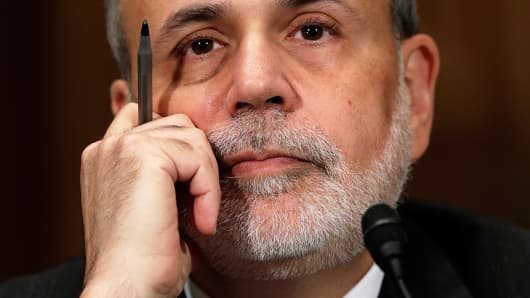The market has been hotly anticipating the next move in Fed policy, with tapering of asset purchases expected to be announced at the next FOMC meeting.
After the decision came down, the stock market added to previous narrow gains while bond yields moved little.
In all, the Fed exacted few changes to the language from its last meeting, leaving open the possibility that it could add or subtract from the QE purchases depending on conditions.
The main change was a switch from a view of "moderate" growth to "modest."
That could indicate that the Fed is giving itself enough wiggle room to not begin tapering in September in case of unexpected economic developments, said Andrew Wilkinson, chief economic strategist at Miller Tabak.
(Read more: Obama defends Summers amid Fed speculation)
"Some subtle changes in the format of the ensuing policy statement and on balance it appears that the central bank has edged ever so slightly away from reducing bond purchases," Wilkinson said, though he added that overall "the sense that easy money is here to stay will likely permeate investor sentiment."
What was missing from this month was the post-meeting news conference from Chairman Ben Bernanke.
The central bank chief rattled markets in May when he suggested that QE likely would end in 2014.
Markets took the statement to mean that the Fed also would begin to raise interest rates sooner than expected. A cadre of Fed officials followed that meeting with public statements aimed at quelling fears that money tightening was coming, and the massive stock market rally of 2013 resumed.
The committee has previously said it would take a decline in the unemployment rate to 6.5 percent and a rise in inflation to 2.5 percent before interest rates are normalized. The unemployment rate is at 7.6 percent while inflation is 1.8 percent.
(Read more: Jobs or GDP: There can only be one)
The committee voted 11-1 in favor of Wednesday's statement, with Esther George continuing her dissent. She remains concerned over the inflation goal and risk of financial imbalances.
St. Louis Fed President James Bullard withdrew a dissent that he voiced in May, based primarily on worry that the Fed needed to push harder on inflation.
"We can assume that the FOMC has become more dovish or Bullard has become more hawkish," said Doug Roberts, at Channel Capital Research. "Based upon recent speeches by (Bernanke indicating) a willingness to reverse tapering quickly if the economy weakens, we believe that the Fed has a more dovish consensus due to...threats to the economy, specifically the low level of inflation."
The committee took note of rising mortgage rates—an impetus for it to continue to buy MBS—and said employment was improving but still elevated.
_ By CNBC's Jeff Cox. Follow him @JeffCoxCNBCcom on Twitter.





